Literature Review: Glass Ceiling & Asian Women in Leadership (QAB020)
VerifiedAdded on 2023/06/18
|38
|11220
|446
Literature Review
AI Summary
This literature review investigates the impact of the glass ceiling on Asian women's chances of promotion to top management positions. It begins by introducing the concept of the glass ceiling and its relevance to women in the UK, particularly Asian women. The review explores the historical context and theoretical frameworks surrounding this phenomenon, including the "bamboo ceiling" specific to Asians. It examines factors contributing to the underrepresentation of women in leadership, such as societal stereotyping, discrimination, and cultural barriers. The review also analyzes the human capital, socio-psychological, and systematic obstacles that hinder women's progress. Furthermore, it discusses the UK's women employment status in leadership positions, providing statistical data and highlighting the persistent inequalities. The review concludes by synthesizing the literature and emphasizing the need to address these barriers to promote gender equity in organizations. This document is available on Desklib, a platform providing study tools and solved assignments for students.
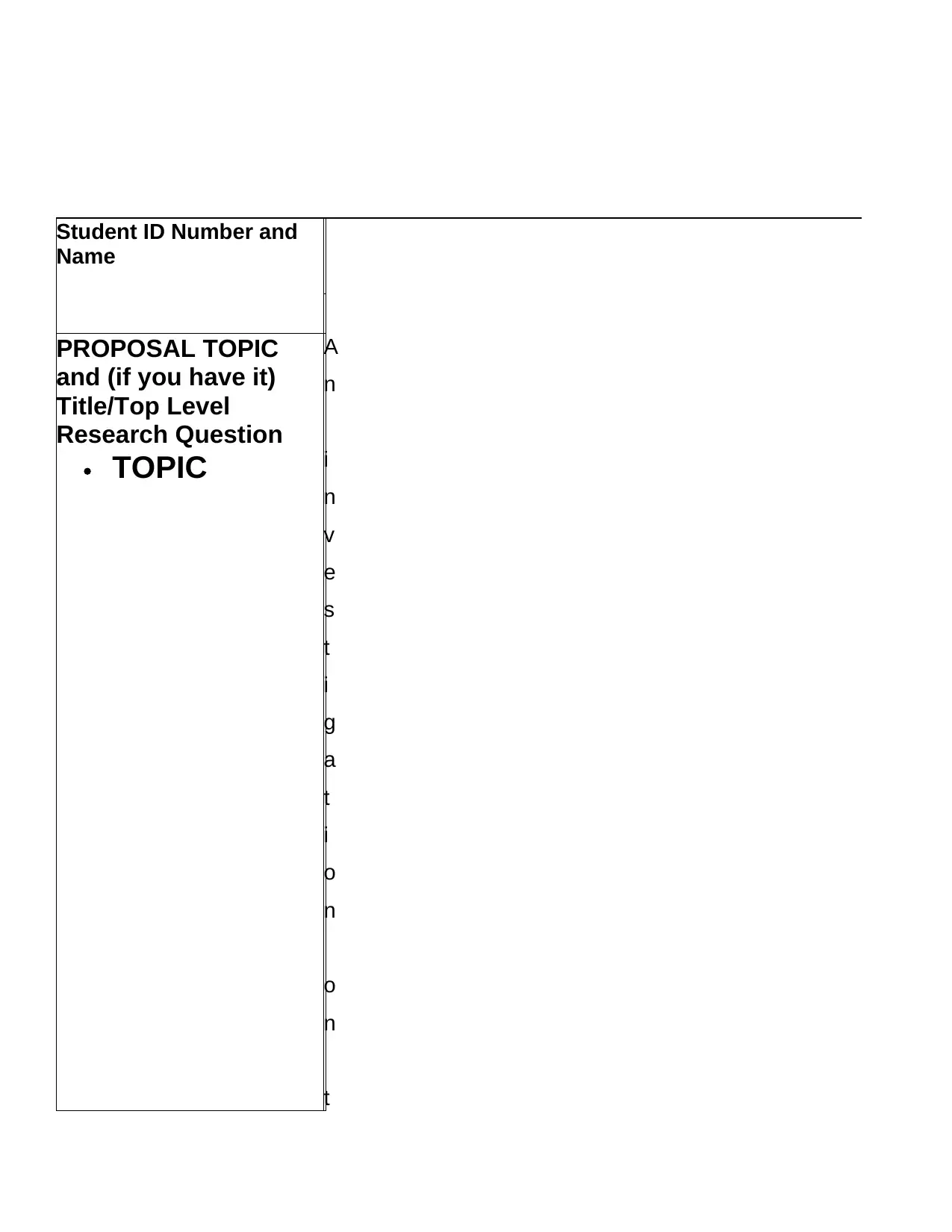
Student ID Number and
Name
PROPOSAL TOPIC
and (if you have it)
Title/Top Level
Research Question
TOPIC
A
n
i
n
v
e
s
t
i
g
a
t
i
o
n
o
n
t
Name
PROPOSAL TOPIC
and (if you have it)
Title/Top Level
Research Question
TOPIC
A
n
i
n
v
e
s
t
i
g
a
t
i
o
n
o
n
t
Paraphrase This Document
Need a fresh take? Get an instant paraphrase of this document with our AI Paraphraser

h
e
g
l
a
s
s
c
e
i
l
i
n
g
p
h
e
n
o
m
e
n
o
n
e
g
l
a
s
s
c
e
i
l
i
n
g
p
h
e
n
o
m
e
n
o
n

–
g
l
a
s
s
c
e
i
l
i
n
g
i
m
p
a
c
t
o
n
g
l
a
s
s
c
e
i
l
i
n
g
i
m
p
a
c
t
o
n
⊘ This is a preview!⊘
Do you want full access?
Subscribe today to unlock all pages.

Trusted by 1+ million students worldwide

t
h
e
A
s
i
a
n
w
o
m
e
n
l
e
a
d
e
r
s
c
h
a
h
e
A
s
i
a
n
w
o
m
e
n
l
e
a
d
e
r
s
c
h
a
Paraphrase This Document
Need a fresh take? Get an instant paraphrase of this document with our AI Paraphraser

n
c
e
s
t
o
p
r
o
m
o
t
e
o
n
t
o
p
m
a
n
a
c
e
s
t
o
p
r
o
m
o
t
e
o
n
t
o
p
m
a
n
a
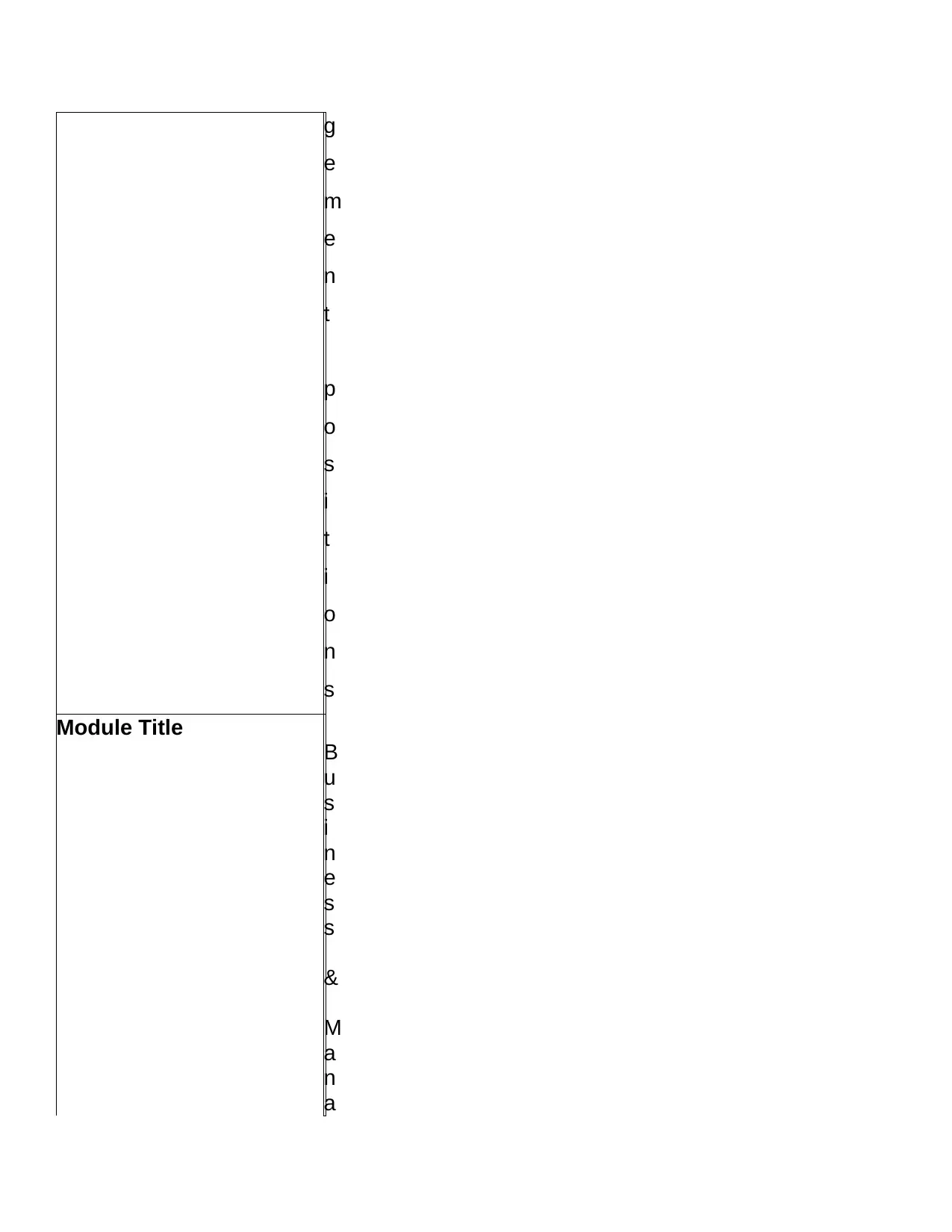
g
e
m
e
n
t
p
o
s
i
t
i
o
n
s
Module Title
B
u
s
i
n
e
s
s
&
M
a
n
a
e
m
e
n
t
p
o
s
i
t
i
o
n
s
Module Title
B
u
s
i
n
e
s
s
&
M
a
n
a
⊘ This is a preview!⊘
Do you want full access?
Subscribe today to unlock all pages.

Trusted by 1+ million students worldwide
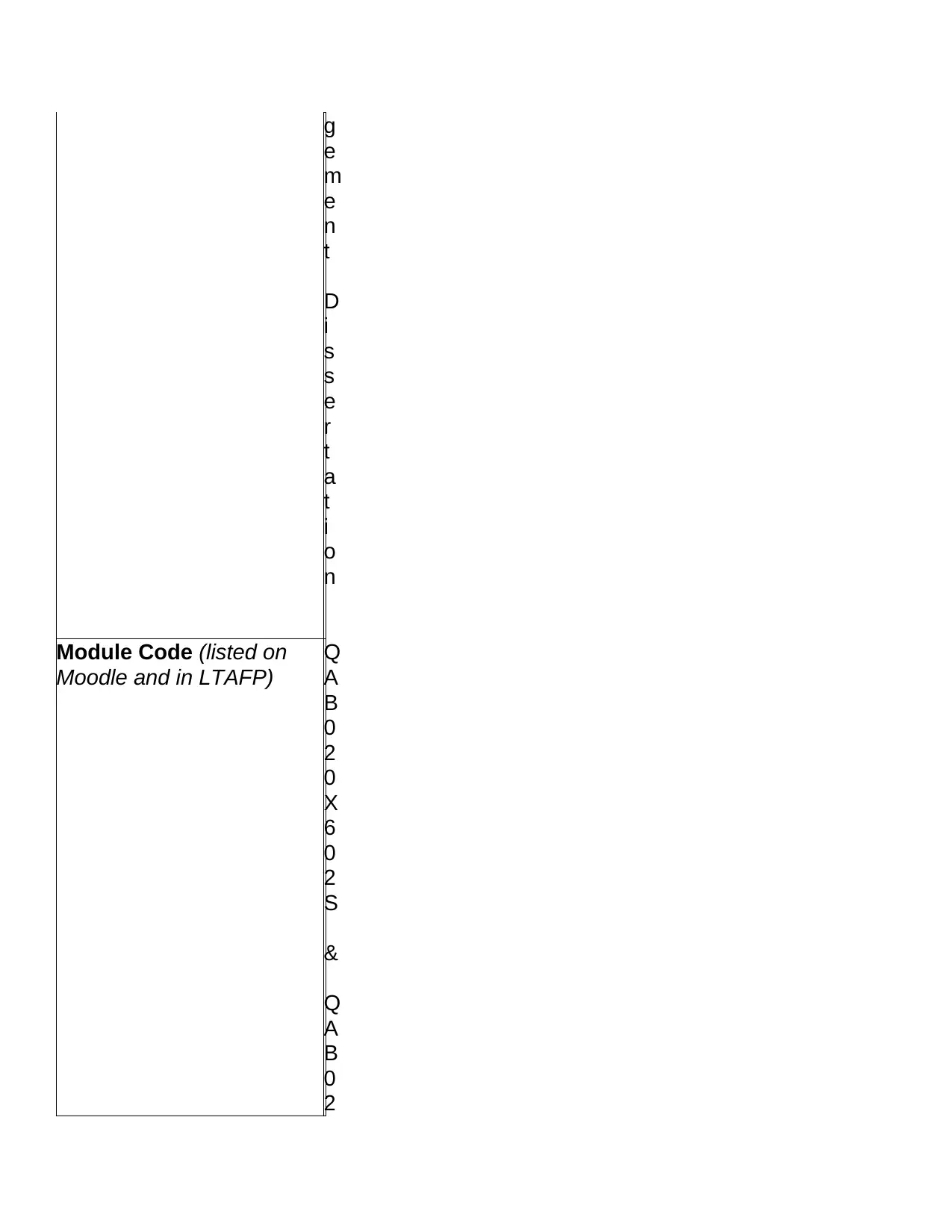
g
e
m
e
n
t
D
i
s
s
e
r
t
a
t
i
o
n
Module Code (listed on
Moodle and in LTAFP)
Q
A
B
0
2
0
X
6
0
2
S
&
Q
A
B
0
2
e
m
e
n
t
D
i
s
s
e
r
t
a
t
i
o
n
Module Code (listed on
Moodle and in LTAFP)
Q
A
B
0
2
0
X
6
0
2
S
&
Q
A
B
0
2
Paraphrase This Document
Need a fresh take? Get an instant paraphrase of this document with our AI Paraphraser
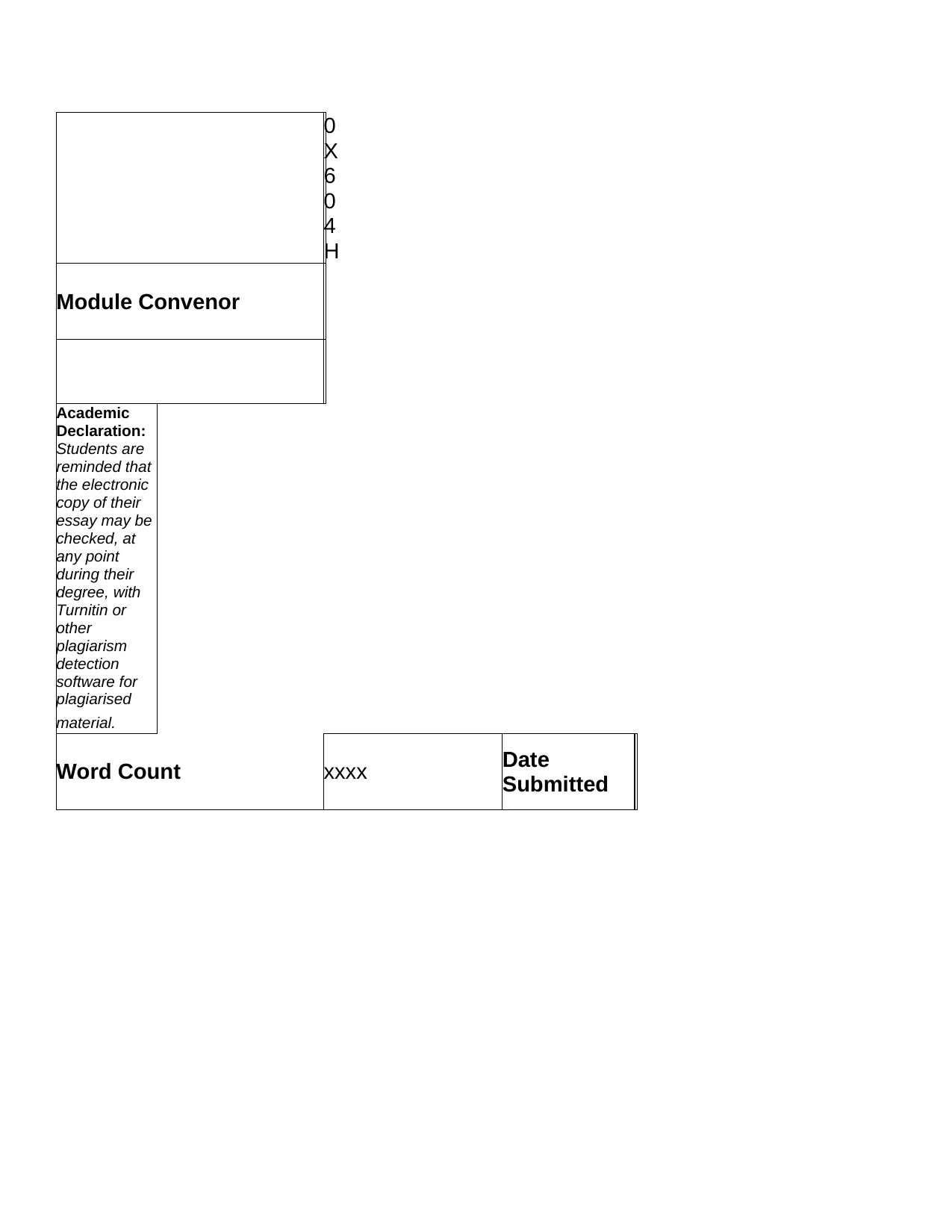
0
X
6
0
4
H
Module Convenor
Academic
Declaration:
Students are
reminded that
the electronic
copy of their
essay may be
checked, at
any point
during their
degree, with
Turnitin or
other
plagiarism
detection
software for
plagiarised
material.
Word Count xxxx Date
Submitted
X
6
0
4
H
Module Convenor
Academic
Declaration:
Students are
reminded that
the electronic
copy of their
essay may be
checked, at
any point
during their
degree, with
Turnitin or
other
plagiarism
detection
software for
plagiarised
material.
Word Count xxxx Date
Submitted
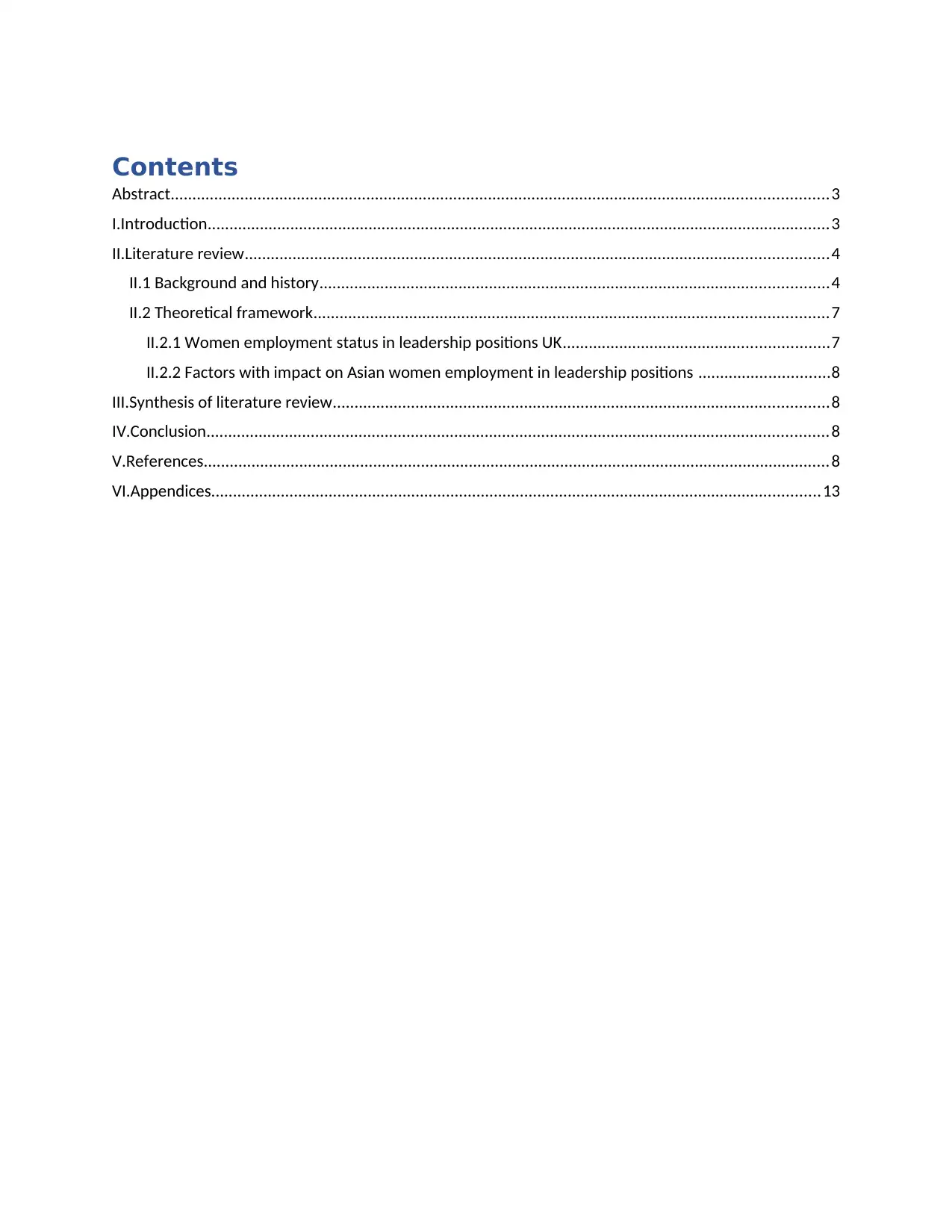
Contents
Abstract.......................................................................................................................................................3
I.Introduction...............................................................................................................................................3
II.Literature review......................................................................................................................................4
II.1 Background and history.....................................................................................................................4
II.2 Theoretical framework......................................................................................................................7
II.2.1 Women employment status in leadership positions UK.............................................................7
II.2.2 Factors with impact on Asian women employment in leadership positions ..............................8
III.Synthesis of literature review..................................................................................................................8
IV.Conclusion...............................................................................................................................................8
V.References................................................................................................................................................8
VI.Appendices............................................................................................................................................13
Abstract.......................................................................................................................................................3
I.Introduction...............................................................................................................................................3
II.Literature review......................................................................................................................................4
II.1 Background and history.....................................................................................................................4
II.2 Theoretical framework......................................................................................................................7
II.2.1 Women employment status in leadership positions UK.............................................................7
II.2.2 Factors with impact on Asian women employment in leadership positions ..............................8
III.Synthesis of literature review..................................................................................................................8
IV.Conclusion...............................................................................................................................................8
V.References................................................................................................................................................8
VI.Appendices............................................................................................................................................13
⊘ This is a preview!⊘
Do you want full access?
Subscribe today to unlock all pages.

Trusted by 1+ million students worldwide
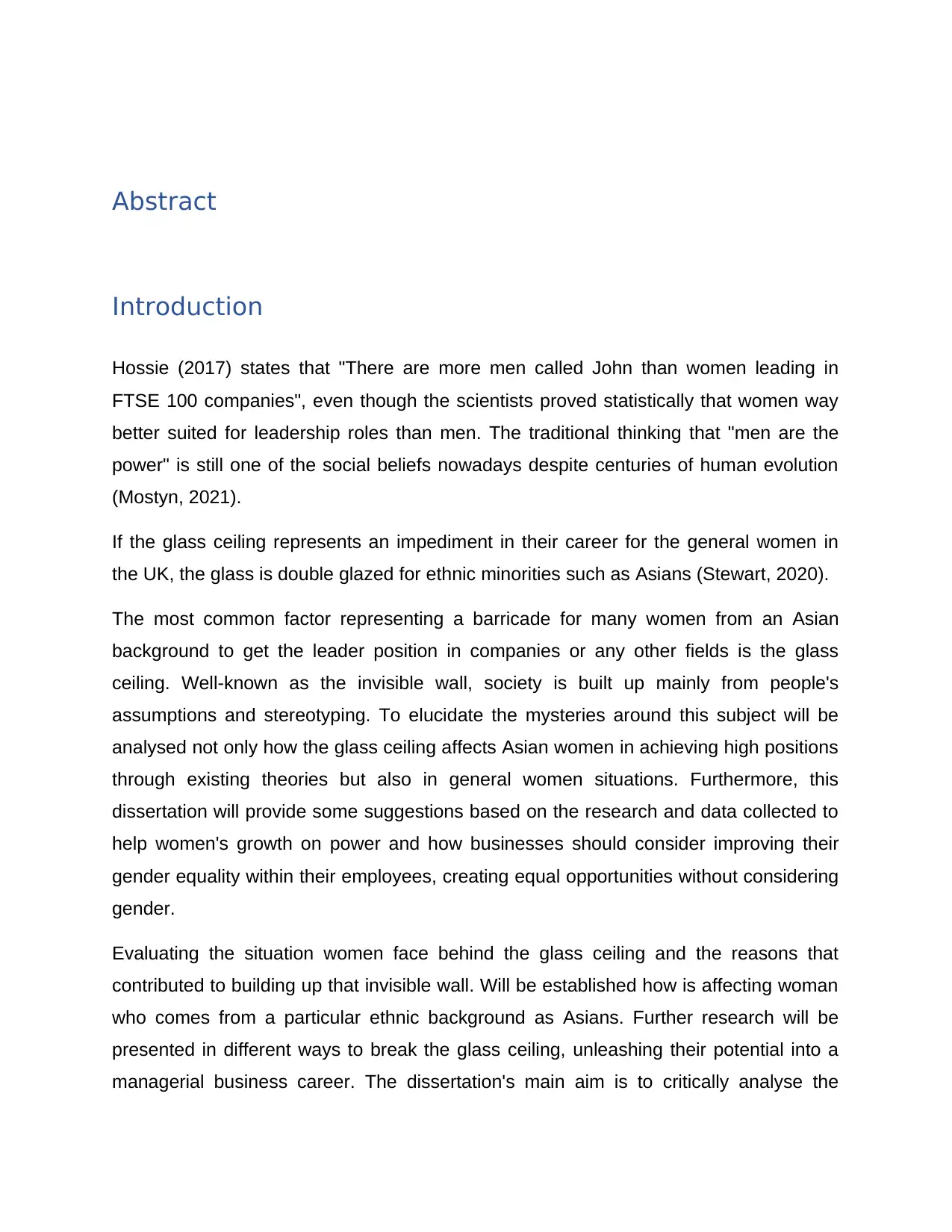
Abstract
Introduction
Hossie (2017) states that "There are more men called John than women leading in
FTSE 100 companies", even though the scientists proved statistically that women way
better suited for leadership roles than men. The traditional thinking that "men are the
power" is still one of the social beliefs nowadays despite centuries of human evolution
(Mostyn, 2021).
If the glass ceiling represents an impediment in their career for the general women in
the UK, the glass is double glazed for ethnic minorities such as Asians (Stewart, 2020).
The most common factor representing a barricade for many women from an Asian
background to get the leader position in companies or any other fields is the glass
ceiling. Well-known as the invisible wall, society is built up mainly from people's
assumptions and stereotyping. To elucidate the mysteries around this subject will be
analysed not only how the glass ceiling affects Asian women in achieving high positions
through existing theories but also in general women situations. Furthermore, this
dissertation will provide some suggestions based on the research and data collected to
help women's growth on power and how businesses should consider improving their
gender equality within their employees, creating equal opportunities without considering
gender.
Evaluating the situation women face behind the glass ceiling and the reasons that
contributed to building up that invisible wall. Will be established how is affecting woman
who comes from a particular ethnic background as Asians. Further research will be
presented in different ways to break the glass ceiling, unleashing their potential into a
managerial business career. The dissertation's main aim is to critically analyse the
Introduction
Hossie (2017) states that "There are more men called John than women leading in
FTSE 100 companies", even though the scientists proved statistically that women way
better suited for leadership roles than men. The traditional thinking that "men are the
power" is still one of the social beliefs nowadays despite centuries of human evolution
(Mostyn, 2021).
If the glass ceiling represents an impediment in their career for the general women in
the UK, the glass is double glazed for ethnic minorities such as Asians (Stewart, 2020).
The most common factor representing a barricade for many women from an Asian
background to get the leader position in companies or any other fields is the glass
ceiling. Well-known as the invisible wall, society is built up mainly from people's
assumptions and stereotyping. To elucidate the mysteries around this subject will be
analysed not only how the glass ceiling affects Asian women in achieving high positions
through existing theories but also in general women situations. Furthermore, this
dissertation will provide some suggestions based on the research and data collected to
help women's growth on power and how businesses should consider improving their
gender equality within their employees, creating equal opportunities without considering
gender.
Evaluating the situation women face behind the glass ceiling and the reasons that
contributed to building up that invisible wall. Will be established how is affecting woman
who comes from a particular ethnic background as Asians. Further research will be
presented in different ways to break the glass ceiling, unleashing their potential into a
managerial business career. The dissertation's main aim is to critically analyse the
Paraphrase This Document
Need a fresh take? Get an instant paraphrase of this document with our AI Paraphraser
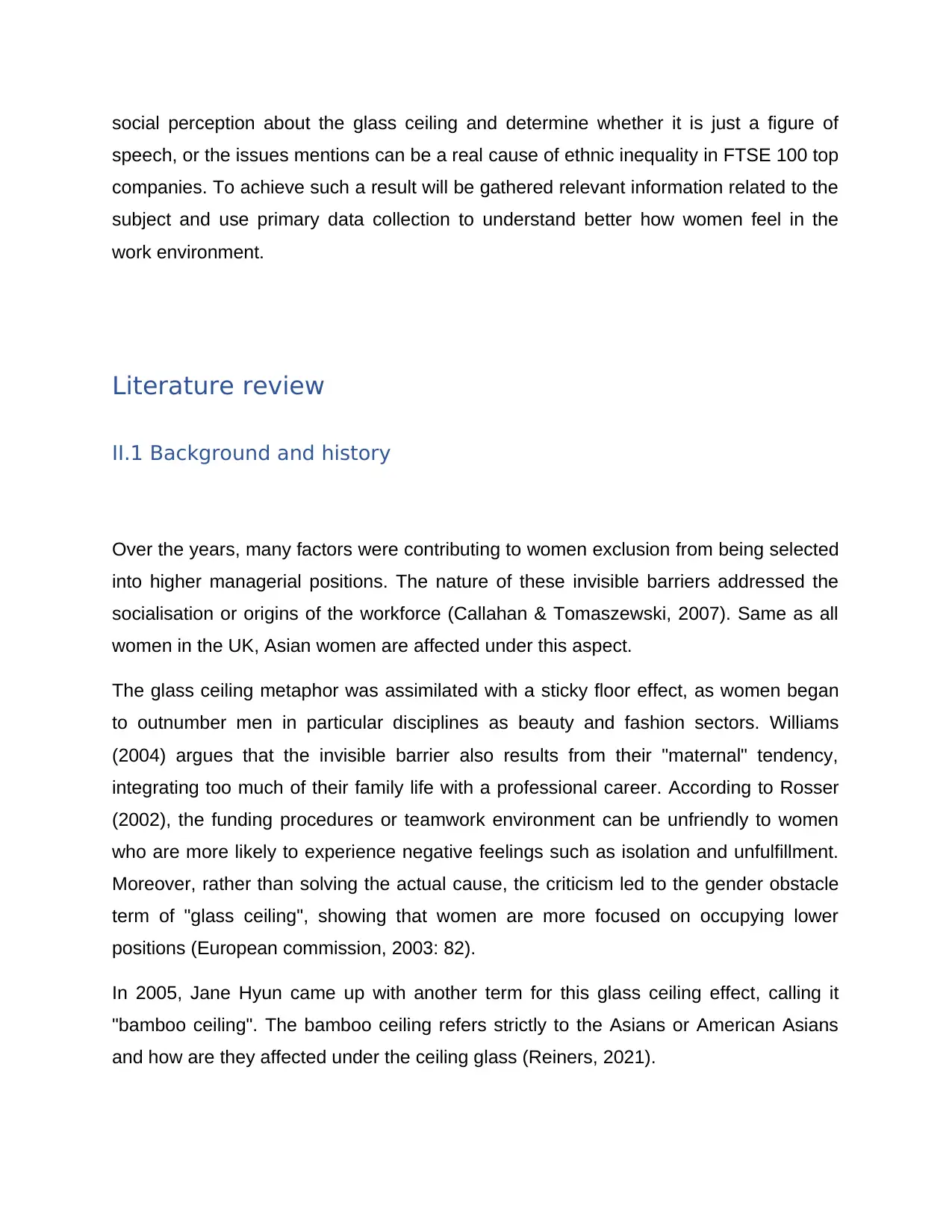
social perception about the glass ceiling and determine whether it is just a figure of
speech, or the issues mentions can be a real cause of ethnic inequality in FTSE 100 top
companies. To achieve such a result will be gathered relevant information related to the
subject and use primary data collection to understand better how women feel in the
work environment.
Literature review
II.1 Background and history
Over the years, many factors were contributing to women exclusion from being selected
into higher managerial positions. The nature of these invisible barriers addressed the
socialisation or origins of the workforce (Callahan & Tomaszewski, 2007). Same as all
women in the UK, Asian women are affected under this aspect.
The glass ceiling metaphor was assimilated with a sticky floor effect, as women began
to outnumber men in particular disciplines as beauty and fashion sectors. Williams
(2004) argues that the invisible barrier also results from their "maternal" tendency,
integrating too much of their family life with a professional career. According to Rosser
(2002), the funding procedures or teamwork environment can be unfriendly to women
who are more likely to experience negative feelings such as isolation and unfulfillment.
Moreover, rather than solving the actual cause, the criticism led to the gender obstacle
term of "glass ceiling", showing that women are more focused on occupying lower
positions (European commission, 2003: 82).
In 2005, Jane Hyun came up with another term for this glass ceiling effect, calling it
"bamboo ceiling". The bamboo ceiling refers strictly to the Asians or American Asians
and how are they affected under the ceiling glass (Reiners, 2021).
speech, or the issues mentions can be a real cause of ethnic inequality in FTSE 100 top
companies. To achieve such a result will be gathered relevant information related to the
subject and use primary data collection to understand better how women feel in the
work environment.
Literature review
II.1 Background and history
Over the years, many factors were contributing to women exclusion from being selected
into higher managerial positions. The nature of these invisible barriers addressed the
socialisation or origins of the workforce (Callahan & Tomaszewski, 2007). Same as all
women in the UK, Asian women are affected under this aspect.
The glass ceiling metaphor was assimilated with a sticky floor effect, as women began
to outnumber men in particular disciplines as beauty and fashion sectors. Williams
(2004) argues that the invisible barrier also results from their "maternal" tendency,
integrating too much of their family life with a professional career. According to Rosser
(2002), the funding procedures or teamwork environment can be unfriendly to women
who are more likely to experience negative feelings such as isolation and unfulfillment.
Moreover, rather than solving the actual cause, the criticism led to the gender obstacle
term of "glass ceiling", showing that women are more focused on occupying lower
positions (European commission, 2003: 82).
In 2005, Jane Hyun came up with another term for this glass ceiling effect, calling it
"bamboo ceiling". The bamboo ceiling refers strictly to the Asians or American Asians
and how are they affected under the ceiling glass (Reiners, 2021).
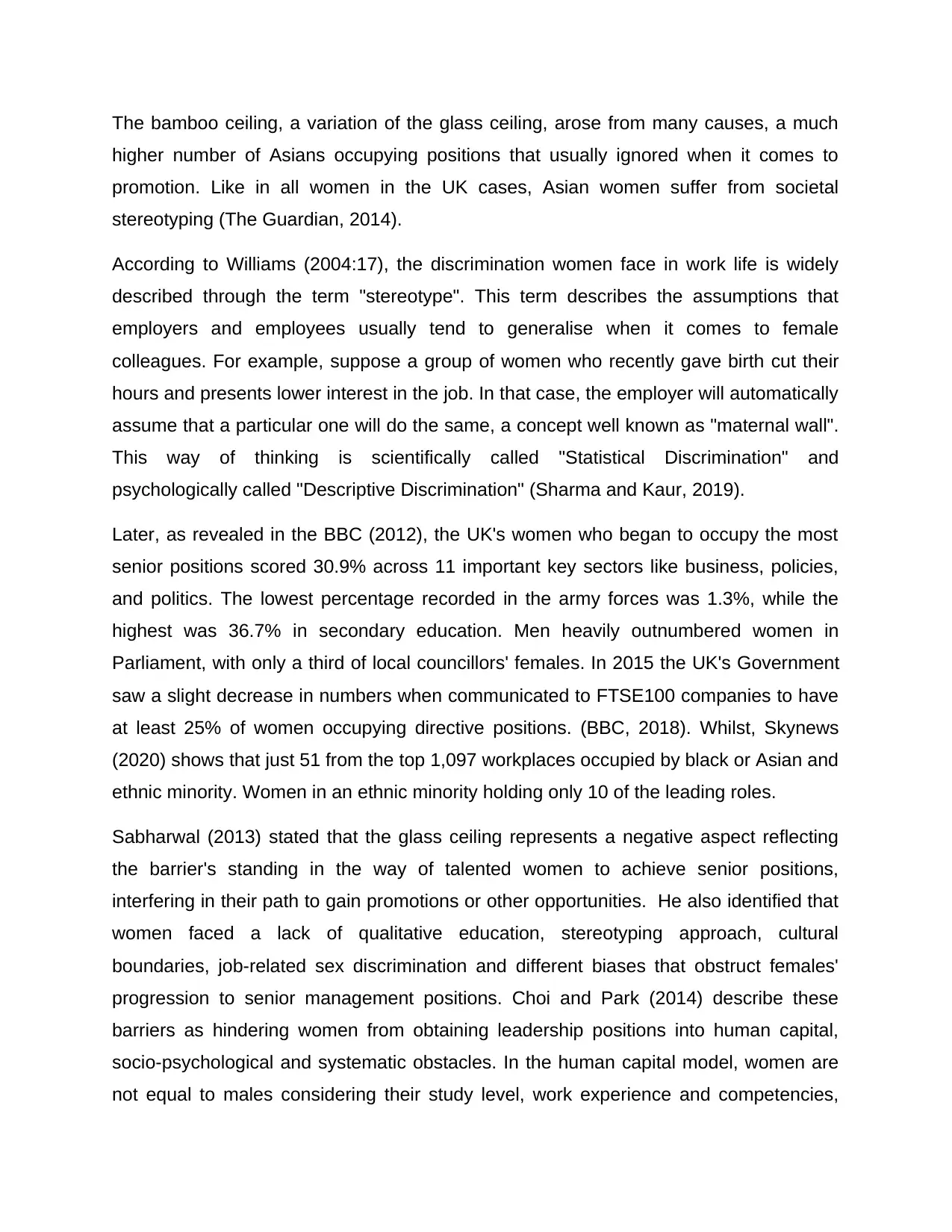
The bamboo ceiling, a variation of the glass ceiling, arose from many causes, a much
higher number of Asians occupying positions that usually ignored when it comes to
promotion. Like in all women in the UK cases, Asian women suffer from societal
stereotyping (The Guardian, 2014).
According to Williams (2004:17), the discrimination women face in work life is widely
described through the term "stereotype". This term describes the assumptions that
employers and employees usually tend to generalise when it comes to female
colleagues. For example, suppose a group of women who recently gave birth cut their
hours and presents lower interest in the job. In that case, the employer will automatically
assume that a particular one will do the same, a concept well known as "maternal wall".
This way of thinking is scientifically called "Statistical Discrimination" and
psychologically called "Descriptive Discrimination" (Sharma and Kaur, 2019).
Later, as revealed in the BBC (2012), the UK's women who began to occupy the most
senior positions scored 30.9% across 11 important key sectors like business, policies,
and politics. The lowest percentage recorded in the army forces was 1.3%, while the
highest was 36.7% in secondary education. Men heavily outnumbered women in
Parliament, with only a third of local councillors' females. In 2015 the UK's Government
saw a slight decrease in numbers when communicated to FTSE100 companies to have
at least 25% of women occupying directive positions. (BBC, 2018). Whilst, Skynews
(2020) shows that just 51 from the top 1,097 workplaces occupied by black or Asian and
ethnic minority. Women in an ethnic minority holding only 10 of the leading roles.
Sabharwal (2013) stated that the glass ceiling represents a negative aspect reflecting
the barrier's standing in the way of talented women to achieve senior positions,
interfering in their path to gain promotions or other opportunities. He also identified that
women faced a lack of qualitative education, stereotyping approach, cultural
boundaries, job-related sex discrimination and different biases that obstruct females'
progression to senior management positions. Choi and Park (2014) describe these
barriers as hindering women from obtaining leadership positions into human capital,
socio-psychological and systematic obstacles. In the human capital model, women are
not equal to males considering their study level, work experience and competencies,
higher number of Asians occupying positions that usually ignored when it comes to
promotion. Like in all women in the UK cases, Asian women suffer from societal
stereotyping (The Guardian, 2014).
According to Williams (2004:17), the discrimination women face in work life is widely
described through the term "stereotype". This term describes the assumptions that
employers and employees usually tend to generalise when it comes to female
colleagues. For example, suppose a group of women who recently gave birth cut their
hours and presents lower interest in the job. In that case, the employer will automatically
assume that a particular one will do the same, a concept well known as "maternal wall".
This way of thinking is scientifically called "Statistical Discrimination" and
psychologically called "Descriptive Discrimination" (Sharma and Kaur, 2019).
Later, as revealed in the BBC (2012), the UK's women who began to occupy the most
senior positions scored 30.9% across 11 important key sectors like business, policies,
and politics. The lowest percentage recorded in the army forces was 1.3%, while the
highest was 36.7% in secondary education. Men heavily outnumbered women in
Parliament, with only a third of local councillors' females. In 2015 the UK's Government
saw a slight decrease in numbers when communicated to FTSE100 companies to have
at least 25% of women occupying directive positions. (BBC, 2018). Whilst, Skynews
(2020) shows that just 51 from the top 1,097 workplaces occupied by black or Asian and
ethnic minority. Women in an ethnic minority holding only 10 of the leading roles.
Sabharwal (2013) stated that the glass ceiling represents a negative aspect reflecting
the barrier's standing in the way of talented women to achieve senior positions,
interfering in their path to gain promotions or other opportunities. He also identified that
women faced a lack of qualitative education, stereotyping approach, cultural
boundaries, job-related sex discrimination and different biases that obstruct females'
progression to senior management positions. Choi and Park (2014) describe these
barriers as hindering women from obtaining leadership positions into human capital,
socio-psychological and systematic obstacles. In the human capital model, women are
not equal to males considering their study level, work experience and competencies,
⊘ This is a preview!⊘
Do you want full access?
Subscribe today to unlock all pages.

Trusted by 1+ million students worldwide
1 out of 38
Related Documents
Your All-in-One AI-Powered Toolkit for Academic Success.
+13062052269
info@desklib.com
Available 24*7 on WhatsApp / Email
![[object Object]](/_next/static/media/star-bottom.7253800d.svg)
Unlock your academic potential
Copyright © 2020–2025 A2Z Services. All Rights Reserved. Developed and managed by ZUCOL.





